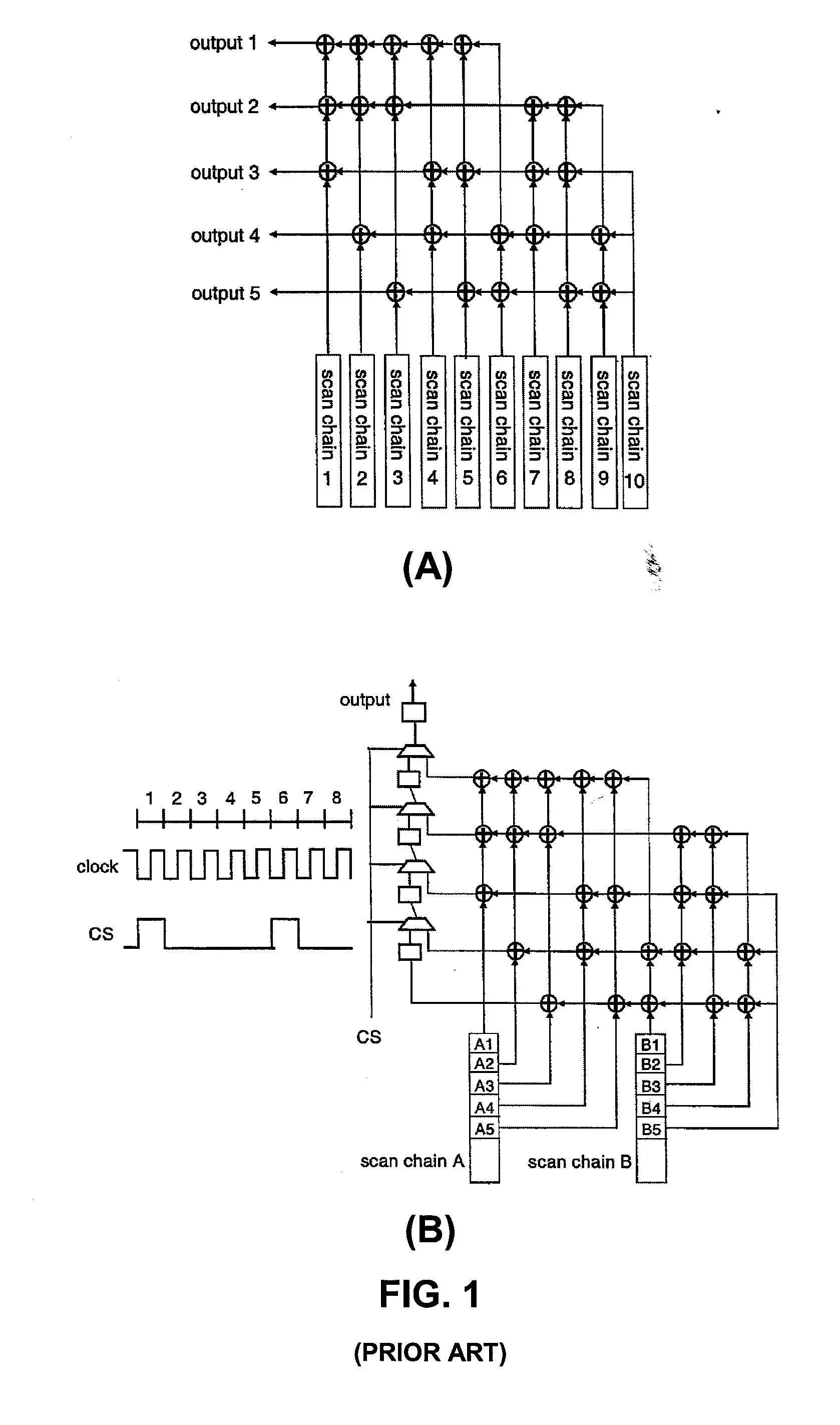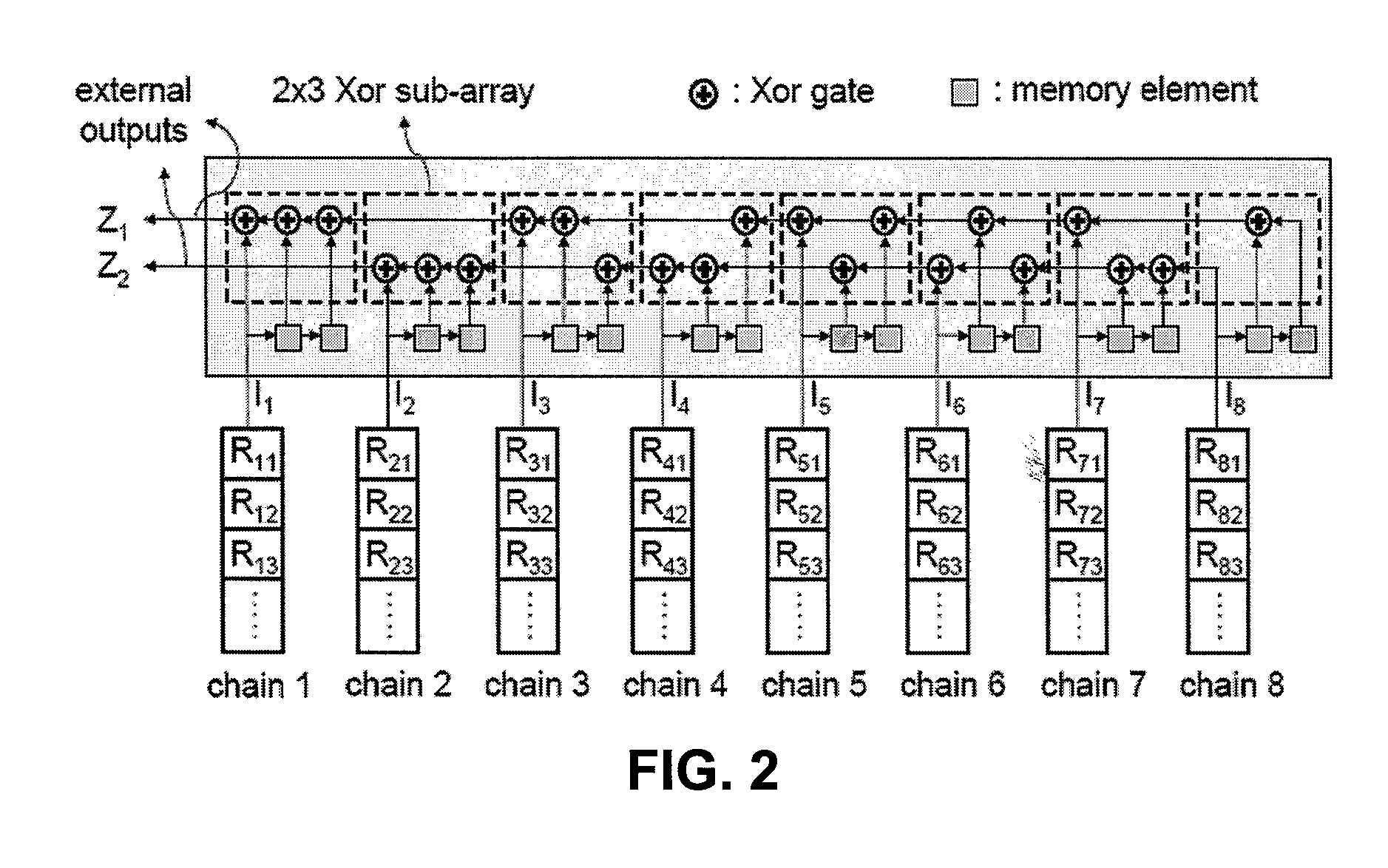Test Output Compaction for Responses with Unknown Values
- Summary
- Abstract
- Description
- Claims
- Application Information
AI Technical Summary
Benefits of technology
Problems solved by technology
Method used
Image
Examples
Embodiment Construction
[0018]FIG. 2 is a block diagram depicting an exemplary compactor, arranged in accordance with an embodiment of the present invention. The inventors refer to the compactor 200 as a “Chi-Yun” compactor. The compactor 200 depicted in FIG. 2 illustratively comprises eight inputs 211, . . . , 218 and two external outputs 291, 292. Each input connects to a scan chain 201, . . . , 208 and each external output 291, 292 connects to a tester channel.
[0019] The compactor 200 comprises logic gates, preferably XOR gates, grouped into sub-arrays 221, . . . , 228. For each scan chain 201, . . . , 208, the compactor includes an XOR sub-array and memory elements arranged so as to propagate a response into different external outputs 291, 292 in different scan-shift cycles. The number of rows in a sub-array is equal to the number of external outputs; the number of columns is one more than the number of memory elements used in the sub-array. As depicted in FIG. 2, the input of the first column in an X...
PUM
 Login to View More
Login to View More Abstract
Description
Claims
Application Information
 Login to View More
Login to View More - R&D
- Intellectual Property
- Life Sciences
- Materials
- Tech Scout
- Unparalleled Data Quality
- Higher Quality Content
- 60% Fewer Hallucinations
Browse by: Latest US Patents, China's latest patents, Technical Efficacy Thesaurus, Application Domain, Technology Topic, Popular Technical Reports.
© 2025 PatSnap. All rights reserved.Legal|Privacy policy|Modern Slavery Act Transparency Statement|Sitemap|About US| Contact US: help@patsnap.com



